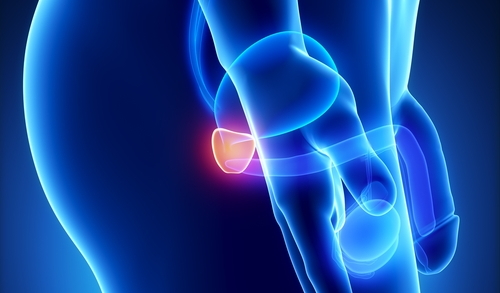A da Vinci prostatectomy combines robotics and a laparoscopic approach—tiny incisions are made in the patient's abdomen so that surgical tools and a lighted tube with a camera on its tip can be inserted through to allow for surgery—to remove all or part of a man’s prostate gland. It is typically used in the treatment of prostate cancer.
Rather than the procedure be carried out by the surgeon directly, he uses robotic arms to do what he would manually. The arms mimic his motions and movements as he controls them from a nearby console.
Prostatectomy Basics
The walnut-sized prostate gland is part of a man’s reproductive system. It plays a role by secreting the slightly alkaline fluid needed to prolong the lifespan of sperm. However, the prostate can generally be removed with only a small change in the patient’s quality of life.
There are two basic types of prostatectomy:
- Simple prostatectomy: As a man ages, the prostate gland can become enlarged. Treatment for this condition (known as benign prostatic hypertrophy, BPH) involves removal of only part of the prostate gland.
- Radical prostatectomy: If prostate cancer is present, a surgeon may remove the entire prostate gland.
For quite some time, both procedures have been done using open surgery, which requires the surgeon to make a large incision (cut) in the lower belly in order to access the prostate gland.
More recently, less invasive procedures (like laparoscopy) have been used that allow surgeons to remove all or part of the prostate gland through smaller incisions made in the abdomen, which results in less blood loss, a lower risk of infection, and faster healing.
A da Vinci prostatectomy is similar to laparoscopy, except the surgeon uses a da Vinci robot to control the camera and surgical tools as the prostate gland is removed either partially or completely.
da Vinci Prostatectomy Procedure
During the da Vinci prostatectomy, which is done under general anesthesia, several small cuts (about the size of a dime) are made in the skin of the lower belly. A small tube with a camera and surgical tools—held by robotic arms—are passed through these holes and guided to the location of the prostate. Once pinpointed, the gland is either partially or completely excised and removed through one of the incisions.
The surgeon uses a remote console the entire time to control the camera and the robot arms. Surgical tools can be swapped in and out on each arm. The da Vinci system also allows an assistant to help out with the surgery, as needed.
The entire procedure lasts around 3.5 hours, although more experienced surgeons may require less time. Once the prostatectomy is completed, the camera and the robot arms are withdrawn. The surgeon closes the abdominal muscles (if they were cut to insert the robotic arms) and the holes in the skin with sutures. Patients are usually discharged from the hospital 24 hours later.
da Vinci Prostatectomy Benefits
The da Vinci robotic system offers several advantages over other prostatectomy techniques:
- 3-dimensional high magnification camera with true color
- More precise control of surgical tools, with small hand shaking filtered out
- Reduced surgeon fatigue
- Better control of blood loss, which allows the surgeon to see more clearly during the procedure
- Ability to make cleaner and more refined cuts in the area of the prostate
- Smaller incisions
- Faster recovery, including control of urine
- Shorter hospital stay
da Vinci Prostatectomy Risks
Every surgery carries potential risks, including da Vinci prostatectomy. They include:
- Infection
- Incontinence
- Sexual dysfunction due to nerve damage
- Heart attack, stroke, or death (due to the general anesthesia)
- Obstructed bowel
- Blocked artery in the lung
Outcome After da Vinci Prostatectomy
If the prostatectomy is simple and performed in the early stage of prostate cancer, full recovery can be achieved in roughly six weeks. Urinary function should be normal and there should be no leakage. Sexual function should be regained as well. Radical prostatecomy, though typically effective at treating prostate cancer before it has metastasized, poses issues. Since the nerves that regulate an erection reside next to the prostate gland, they can become damaged or incidentally removed during the surgery. If such occurs, erection problems can present. Nearly 50 percent of men who have trouble getting an erection following the procedure regain some ability, but over time. It may take as little as three months, or as long as a year.
Additionally, about half of all men who have a radical prostatectomy develop urinary incontinence within one year of the surgery. This occurs because during the surgery the urethra must be cut—since it runs through the prostate gland—and reconnected to the bladder. If the urethra is damaged, men may have infrequent dribbling, or have such involuntary leakage of urine that they require urinary pads. Treatment for incontinence is typically performed if the leakage occurs for a year or more.
References
Su L and Smith JA. (2007). Laparoscopic and robotic-assisted laparoscopic radical prostatectomy and pelvic lymphadenectomy. Campbell's Textbook of Urology. 9th ed.
Farnham SB, Webster TM, Herrell SD, et al. (2006). Intraoperative blood loss and transfusion requirements for robotic-assisted radical prostatectomy versus radical retropubic prostatectomy. Urology 67:360–3.
Dharia SP, Falcone T. (2005). Robotics in reproductive medicine. Fertil Steril. 84:1−11.


